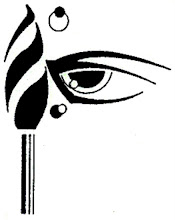|
The Phantom Galleries are temporary exhibitions in non traditional gallery settings.
Kehinde Wiley's Empire of Vulnerability- by Joel Kuennen- ArtSlant
 Alpha Bruton is the Chief Curator at Phantom Gallery Chicago Network, a project that connects artists with temporary installation spaces. She aims to examine the current changes in curatorial production and develop innovative displays concerning virtual spaces. "Curatorial Practice" explores the impact of the urban environment on the artist and their work and the contributions that artists make to the vitality of a city.
Alpha Bruton completed her studies in art education at California State University, Sacramento, and earned an MAAA in Art Administration from the School of the Art Institute of Chicago.
Alpha Bruton is the Chief Curator at Phantom Gallery Chicago Network, a project that connects artists with temporary installation spaces. She aims to examine the current changes in curatorial production and develop innovative displays concerning virtual spaces. "Curatorial Practice" explores the impact of the urban environment on the artist and their work and the contributions that artists make to the vitality of a city.
Alpha Bruton completed her studies in art education at California State University, Sacramento, and earned an MAAA in Art Administration from the School of the Art Institute of Chicago.
Kulturbrücke/Culture Bridge International Art Encounters From Germany & USA
"Art is Business" Curator PIOTR WOLODKOWICZReposted for IAG by Alpha Bruton


|
 Alpha Bruton is the Chief Curator at Phantom Gallery Chicago Network, a project that connects artists with temporary installation spaces. She aims to examine the current changes in curatorial production and develop innovative displays concerning virtual spaces. "Curatorial Practice" explores the impact of the urban environment on the artist and their work and the contributions that artists make to the vitality of a city.
Alpha Bruton completed her studies in art education at California State University, Sacramento, and earned an MAAA in Art Administration from the School of the Art Institute of Chicago.
Alpha Bruton is the Chief Curator at Phantom Gallery Chicago Network, a project that connects artists with temporary installation spaces. She aims to examine the current changes in curatorial production and develop innovative displays concerning virtual spaces. "Curatorial Practice" explores the impact of the urban environment on the artist and their work and the contributions that artists make to the vitality of a city.
Alpha Bruton completed her studies in art education at California State University, Sacramento, and earned an MAAA in Art Administration from the School of the Art Institute of Chicago.
Subscribe to:
Posts (Atom)
Phantom Gallery CHI
EARTH DAY CELEBRATION AT SOJOURNER TRUTH AFRICAN HERITAGE MUSEUM
"Art is Business" FRCBP Report by Daphne Burgess Bowens The public outreach campaign involves high school students from Luther ...

-
"Art is Business" —The ArtSlant Team ArtSlant shut down after twelve years of operation. Co-founder Catherine Ruggles has de...
-
"Art is Business" The opening reception is Friday, 16 September 2016, open studios and Bronzeville Summer Night Art District T...
-
"Art is Business" reposted for Talmadge - and Board and Members of Diaspora Rhythms Black Creativity Juried Art Exhibition 202...
-
Creative Conversation with Artist Itshanapa Dail Chambers 03/29 by Phantom Gallery Chicago Network | Visual Arts Podcasts : Sankofa: ...
-
"Art is Business" reposted for Dail Chambers The Convergence + Exhibitions After organizing with Yeyo Arts Collectiv...
-
"Art is Business" Renee' Baker's CHICAGO MODERN ORCHESTRA PROJECT/PEK CONTEMPORARY PROJECT Berlin present A PAGE OF...
-
"WH on Cottage" is a new GALLERY Located in the Woodlawn Community, at the POAH Woodlawn Resource Center. The new galler...






